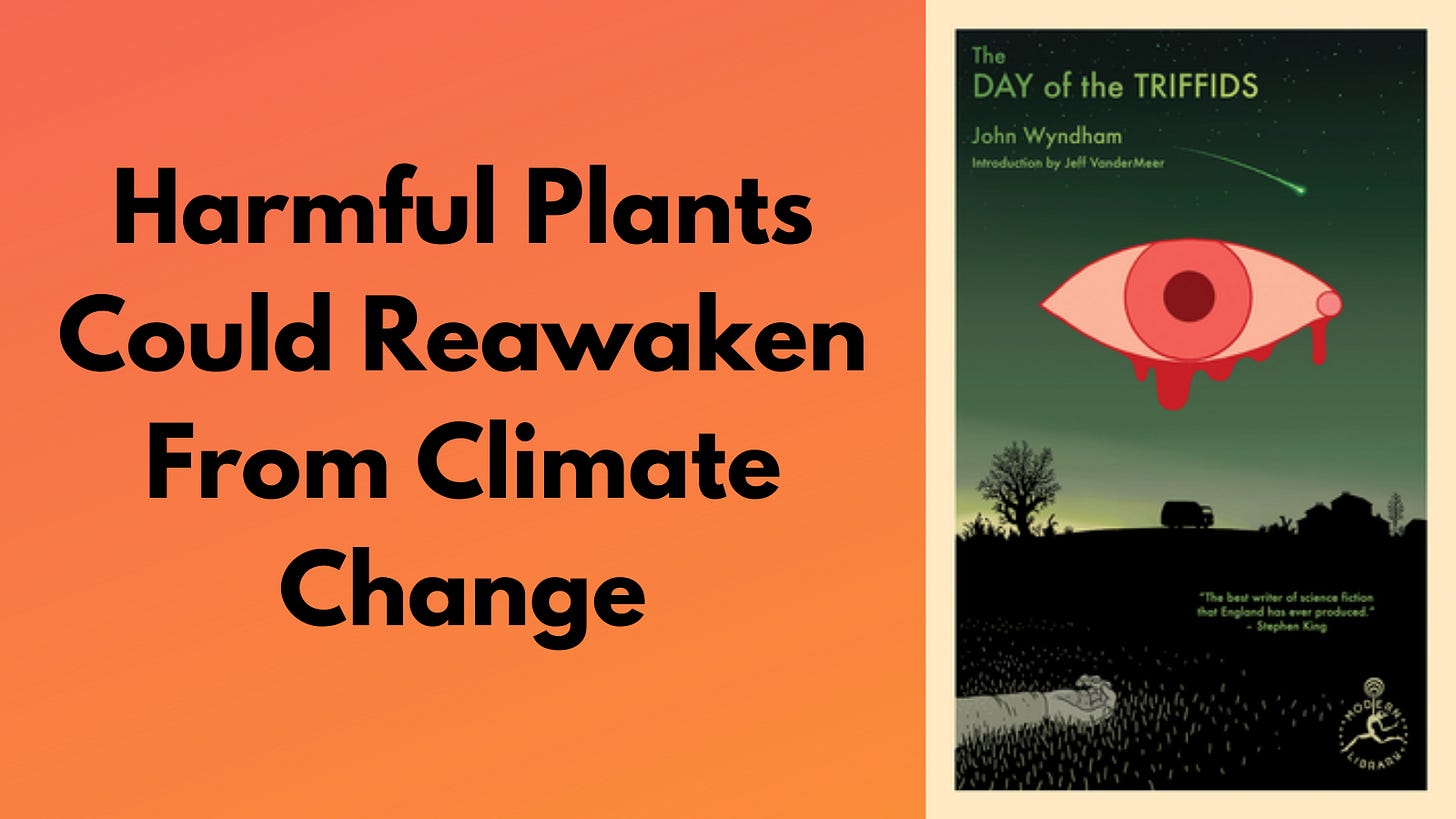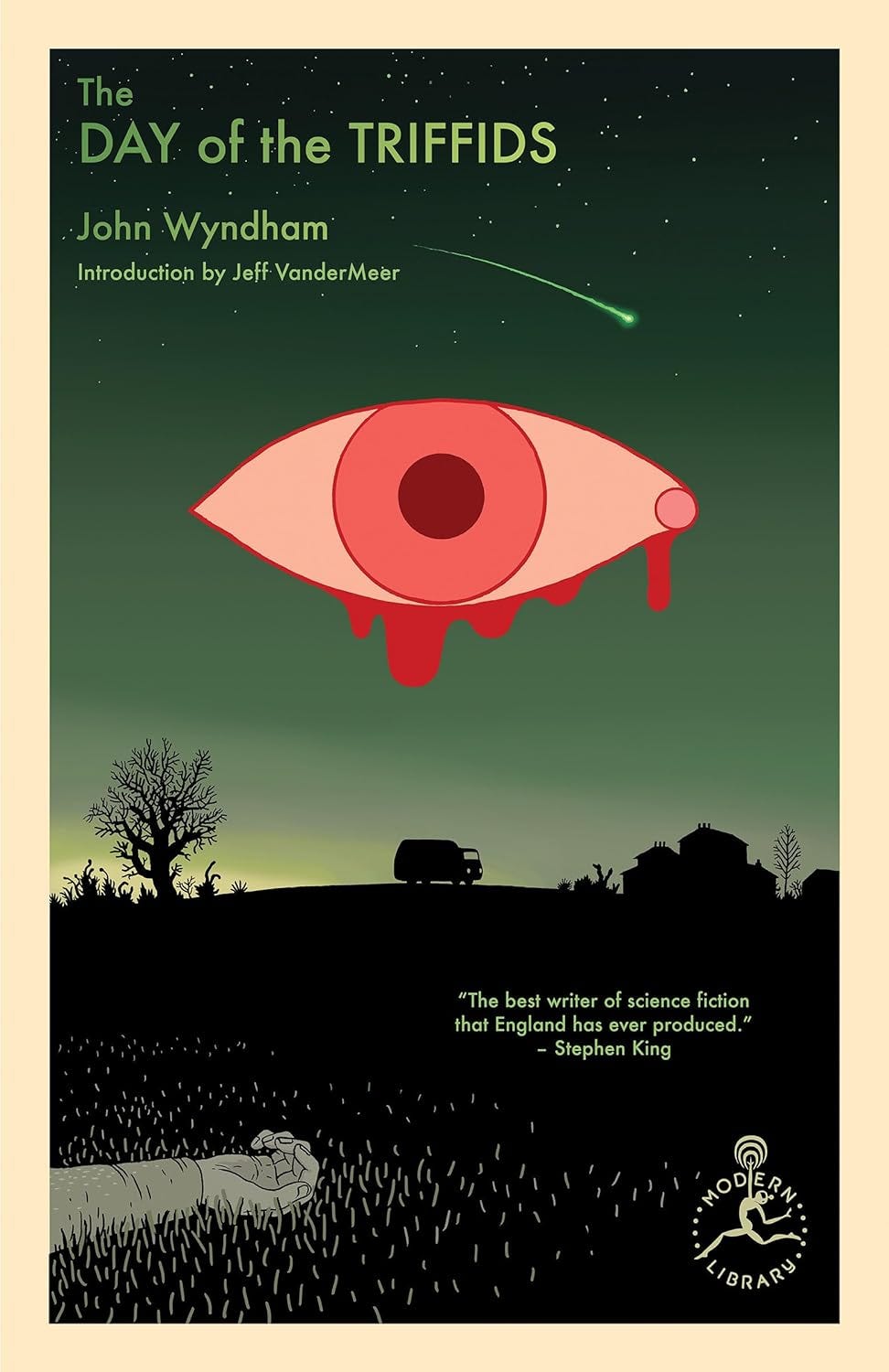News2Novel - Harmful Plants Could Reawaken From Climate Change #18
Where news ends, story begins
Welcome to the 18th issue of News2Novel - the newsletter that recommends novels to read based on weekly news.
I sipped my way through 4 pots of Darjeeling first flush when putting this edition together.
Time-wise, I should probably get it down to 3 pots for next week.
Experience-wise, why would I deny myself a 4th pot of such a fine tea?
Ahem. Let’s dive in.

The News
Researchers from the University of Massachusetts have identified 18 plant species in north-eastern America that could become invasive by 2040-2060 - due to climate change.
When botanists speak of invasive plants, they usually refer to those that spread like wildfire from the moment they arrive, such as Japanese knotweed.
Sleeper invasive plants operate differently: they lie dormant, waiting for favorable conditions to strike.
After extensively studying 1,795 plant species, the researchers found that climate change (rising temperatures and increased rainfall) could awaken 18 sleeper species - like Japanese wisteria and Kudzu.
Such outbreaks would likely cause significant environmental and economic damage, including choking rivers and outcompeting essential native plants that pollinators and livestock depend on.
Early detection and removal of sleeper species is a costly affair, but it's crucial to prevent more expensive and damaging consequences in the future.
The Novel
As is the case with any new phenomenon, it turns out that someone has explored it before. Or at least dreamed some version of it.
The Day of the Triffids by John Wyndham was published in 1951.
It’s a classic English sci-fi novel, where a mysterious meteor shower blinds most of humanity, leading civilization to collapse.
Enter the Triffids: genetically engineered, carnivorous plants that can move. Originally cultivated for their yield of high-grade oil, they start to prey on their now-blinded human masters.
A few survivors team up and navigate the dangers of a crumbling society. They attempt to rebuild in the face of existential Triffid threat.
Connection
Whilst the novel may seem farfetched in plot, its themes chillingly echo the recent research.
Just as the Triffids bided their time before becoming a deadly force, the 18 invasive plants threaten to wake up and wreak ecological havoc.
The meteor shower catalyzed the Triffids. Climate change catalyzes the sleeper species.
Blindness is also a shared dimension across news and novel. In our reality, people are blind to the potential cost, damage and pain of inaction. They are not seeing past the short-term expense (of early detection and removal of invasive plants), which is actually a long-term investment in a better world.
All in all, both novel and news event are stark reminders of how delicate our balance with nature truly is - and how easily it can tip into catastrophe when we ignore the signs.
Before you go…
A few last morsels of inspiration:
Here’s the opening line from The Day of the Triffids:
When a day that you happen to know is Wednesday starts off by sounding like Sunday, there is something seriously wrong somewhere.
See here for a longer excerpt.
The novel was made into a movie in 1962:
I’ve been thinking about poetry, products and poetic products:
- published a fun little quiz that recommends you one of the 13 works on its 2024 longlist - based on your unique answers. I took it and was suggested Orbital by Samantha Harvey:
I’ve ridden nearly 200 miles on my new motorcycle. Massachusetts is such a charming state:
Have a beautiful week!
Dhru






